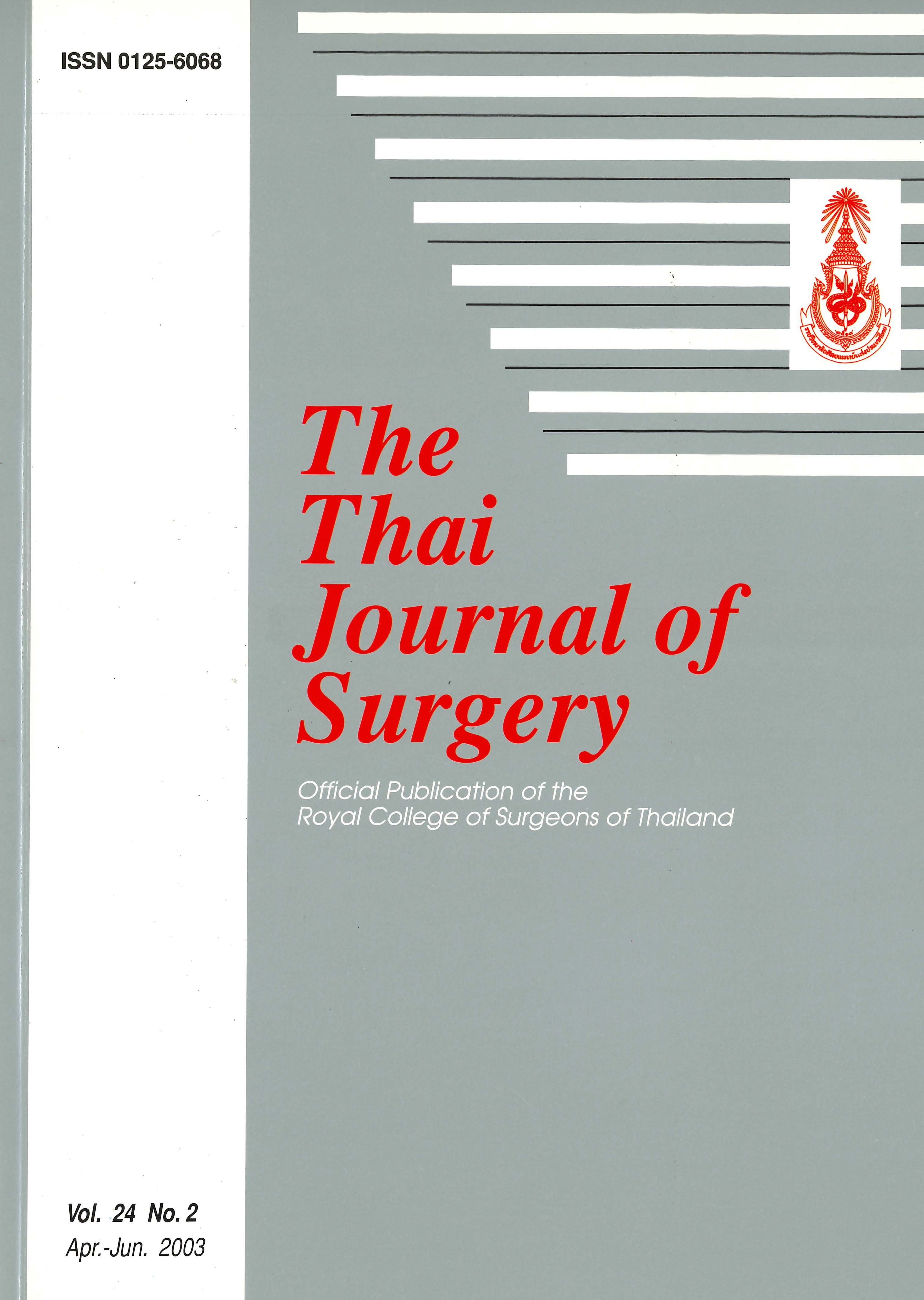Imaging Diagnosis of the Retained Surgical Sponge
Abstract
Background: As long as non-absorbable and radiolucent sponges are used, the preoperative diagnosis of this condition will continue to be a problem. The purpose of this study is to report the imaging findings of retained surgical sponges in 4 patients. The diagnosis was confirmed by operation in all cases.
Materials and Methods: The data collected between 1985 and 2001, included the patients' age, sex, type of operation, interval from previous operation, symptomatology and imaging finding.
Results: Three patients presented with abdominal mass and one patient with intestinal obstruction. The plain abdominal radiography showed whorl-like shadow in 2 cases. Ultrasonography demonstrated low echoic mass with echoic component and posterior acoustic shadow in 2 cases. One computed tomography examination was performed and showed well-defined outline of a mixed density mass with multiple air bubble inside.
Conclusion: Imaging diagnosis of the retained surgical sponge has rarely been reported. We wish to present the imaging approach and findings which may be beneficial to the patient. These may help radiologist and surgeon to establish an early diagnosis of this condition.
References
2. Olnick HM, Weens HS, Rogers Jr JV. Radiological diagnosis of retained surgical sponges. JAMA 1955; 159: 1525-7.
3. Sturdy JH, Baird RM, Gerein AN. Surgical Sponges: a cause of granuloma and adhesion formation. Ann Surg 1967:165:128-34.
4. Moyle H, Hines O, Mc Fadden DW. Gossypiboma of the abdomen. Arch Surg 1996; 131: 566-8.
5. Wiliams RB, Bragg DG, Nelson JA, Gossypiboma the problem of the retained surgical sponge, Radiology 1978; 129: 323-6.
6. Choi BI, Kim SH, Yu ES, Chung HS, Han MC, Kim Cw. Retained surgical sponge: Diagnosis with CT and sonography. Am J Roentgenol 1988; 150: 1047-50.
7. Halber MD, Daffner RH, Morgan CL, Trought WS, Thompson WM, Rice RP, Korobkin M. Intrabdominal abscess: Current concepts in radiologic evaluation. Am J Roentgenol 1979:133: 9-13.
8. Kressel HY, Filly RA. UItrasonographic appearance of gas-containing abscesses in the abdomen. Am J Roentgenol 1978;130: 71-3.
9. Kaiser CW, Friedman S, Spurling KP, Slowick T, Kaiser HA. The retained surgical sponge. Ann Surg 1996; 224: 79-84.
Downloads
Published
How to Cite
Issue
Section
License
Articles must be contributed solely to The Thai Journal of Surgery and when published become the property of the Royal College of Surgeons of Thailand. The Royal College of Surgeons of Thailand reserves copyright on all published materials and such materials may not be reproduced in any form without the written permission.



